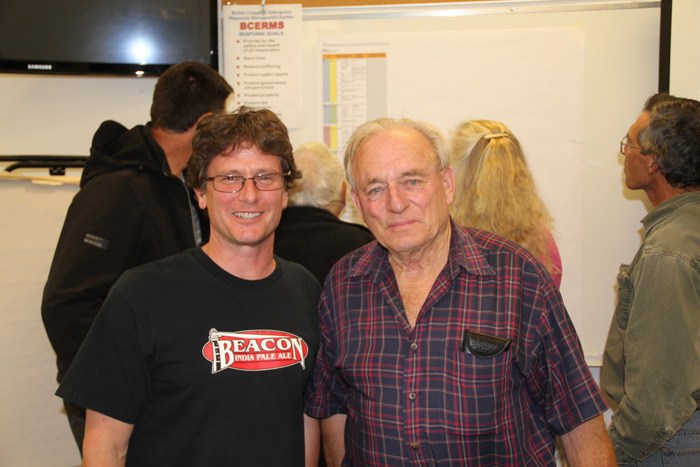It was a well-attended meeting at the Invermere fire hall on June 18 when various stakeholders gathered to learn what was next in store for the Columbia Valley Recreation Advisory Council (CVRAC). Established to facilitate discussion among groups with perceived competing interests, CVRAC has the mandate of arriving at a consensus in order to forward recommendations to the provincial government related to summer and winter Crown land access and use.
“If we don’t reach a critical point, this whole exercise has been a waste of everybody’s time,” CVRAC steering committee member and Nipika Mountain Resort owner Lyle Wilson announced to the group. “Either the Province will make decisions void of local input, or [they] will be based on local interests.”
With the potential to affect access in both the front country — outdoor areas easily accessible by vehicle and mostly frequented by day users — and backcountry, which generally refers to more remote locations without facilities and no vehicle access, CVRAC’s focus is a timber harvesting area called TFL #14, which extends from Spillimacheen in the north to Wasa Provincial Park in the southeast. With the growing demand for outdoor recreation opportunities in this area, conflict between user groups — from rock climbers, hunters and dirt bikers to backcountry skiers, hikers and snowmobilers — has also been on the rise, making the need for a cohesive recreational access management plan more urgent than ever before. Such plans already exist for the Cranbrook, Golden and South Rocky Mountain regions.
“There is a lot of support from Columbia Basin Trust (CBT) to see this move forward,” said CVRAC chair and facilitator Dennis Hamilton, noting his role was that of an impartial facilitator, not mediator, but that CBT would be willing to bring in a mediator to resolve issues should the conflict between user groups prove to be too much of a stumbling block.
Hamilton began by introducing the interest-based negotiation method CVRAC discussions would be adhering to for the duration of the process. In a nutshell, interest-based negotiation is the antithesis to the more traditional win-lose persuasion-based negotiation, which tends to result in conflict. The idea is that by focusing on interests, a variety of solutions can be achieved because finding a common ground is made easier, which promotes understanding between people in conflict.
“The first thing we want to do is narrow down those interests,” said Hamilton, suggesting that hunters, environmentalists and snowmobilers share the same interests of large tracts of wilderness and clean water as an example.
The meeting’s focus was to review a list of previously suggested sectors, identify sector interests and issues, and re-affirm the established sectors, for which representatives would have to be chosen.
“Getting the sectors organized is of paramount importance,” Wilson said.
Hamilton emphasized the importance of selecting a sector representative who was committed to the process and skilled in negotiation with a strong understanding of the sector’s priorities and bottom line.
“One person can drag the entire group down,” he cautioned.
A non-biased steering committee will also meet once a month to keep the process moving forward. Strictly volunteer-driven, it will be responsible for creating meeting agendas and seeing the project through to completion in order for funding to continue.
“I’m really interested in helping resolve this,” said steering committee member and Wildsight development director Kat Hartwig. “This conflict is a disservice to our community; I think it’s long overdue.”
While the public is welcome to attend CVRAC’s monthly meetings, there will not be opportunity for comments. Any information brought to the table must be done so through sector representatives. For more information, contact Hamilton at d.hamilton@telus.net.
